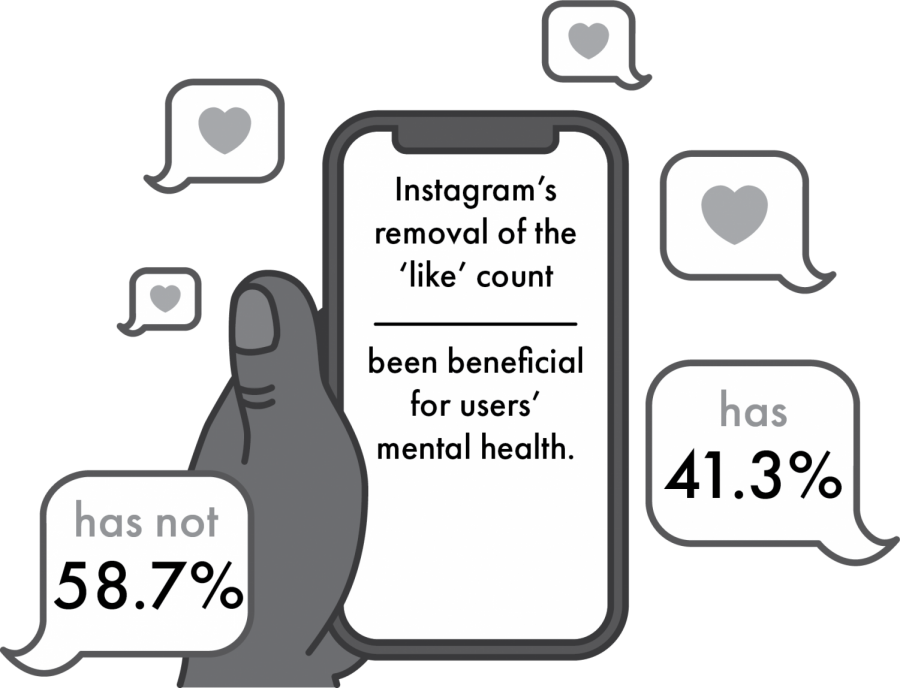Like it or not, Instagram removes its like count
Does it benefit users’ mental health or detract from the platform?
BLOT GRAPHIC BY KARA PETROSINO
A survery of 63 students from Jan. 2 to Jan. 8
January 17, 2020
Instagram, a platform associated with its ability to generate high stress, recently decided to change its negative image. In April, the company announced that they will be implementing new changes, making the number of likes on a post only visible to the account owner. As of now, the feature is only in testing, but could soon become the new reality of the app.
A study conducted by Shepherd’s Hill Academy found that 50% of teens feel that they are addicted to social media, specifically platforms such as Instagram. This study also found that when a teen’s post gets a like on Instagram, it activates the same circuits of the brain that release dopamine.
Adam Mosseri, the head of Instagram, explained to CNBC that the goal is to create a less “pressurized environment” where users can freely express themselves. With several studies showing a link between the amount of time teens spend on social media and depression, Mosseri aims to counteract this unplanned side effect of Instagram.
In Canada, these tests have had positive results with teens feeling less pressured to compare their accounts with others. Many CHS students feel the same, such as junior Ava Turner of Middletown, who said she believes that this feature will have a widespread beneficial impact.
“My friend, she will post a picture and if it doesn’t get enough likes she’ll delete it,” Turner said. “If Instagram does take away the likes, I think it will be a lot less stressful posting what you want to post instead of what you think people want you to post.”
However, not everyone is in favor of the idea. Junior Anna Zimmer of Marlboro said she feels that this change will make it practically impossible for businesses and influencers to function.
“It’s important to see because it helps you figure out what people like to see especially if you’re doing something more like a business,” Zimmer said. “It helps you get more likes by seeing what’s popular.”
The intended effect, however, is simply to improve influencers’ content quality, not to take away their means to profit. When the test first came out in Canada, influencers were questioned to see if they improved the quality of their images. According to CNBC, of the just over 100 influencers surveyed, 62% said that they spent the same amount of time on content.
Another positive effect could be the eradication of a fraudulent ’like economy’, where Instagram users will buy fake likes from company-run accounts. This removal of likes visibility has also shifted legitimate companies’ focus from engagement to measuring the actual sales an influencer will bring in.
“In the last year and a half, it’s been an education process, [clients] have almost completely abandoned the idea of engagement rates being the most important piece … it’s become a nice-to-have,” said Ryan Detert, CEO of influencer marketing company Influential, in an interview with CNBC.
Another CEO, Quynh Mai of Moving Image and Content, explained to CNBC that Instagram “was based on emojis and thumbs up and likes, which is a very shallow measurement of community,” whereas now it can form a deeper community.
As of now Instagram is officially moving toward the removal of the like feature for all countries and people that use the platform.














